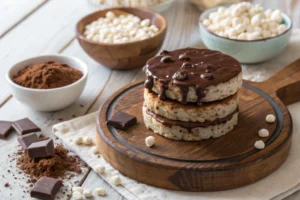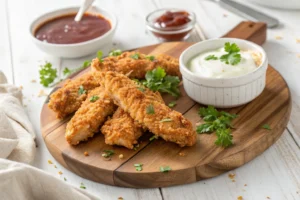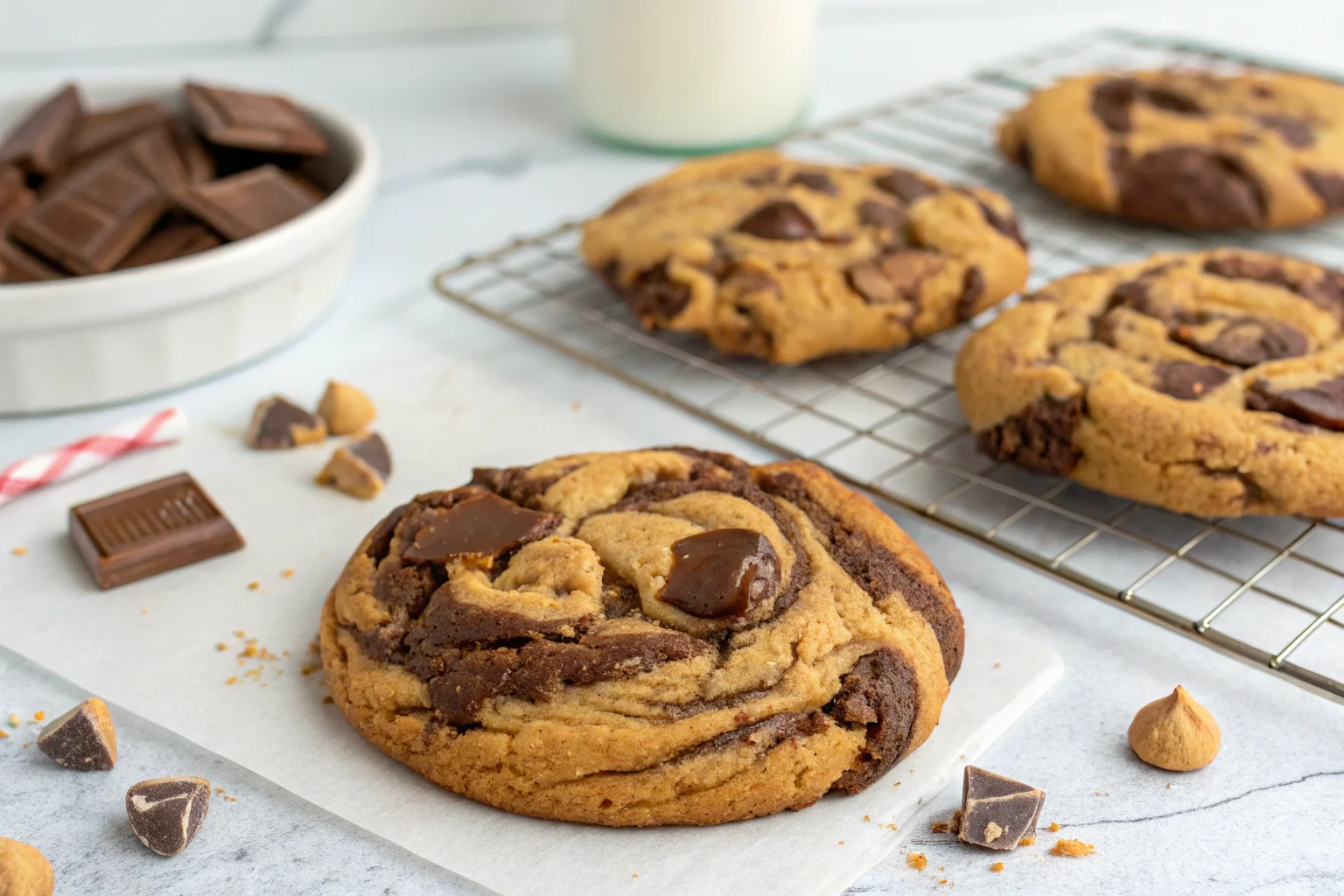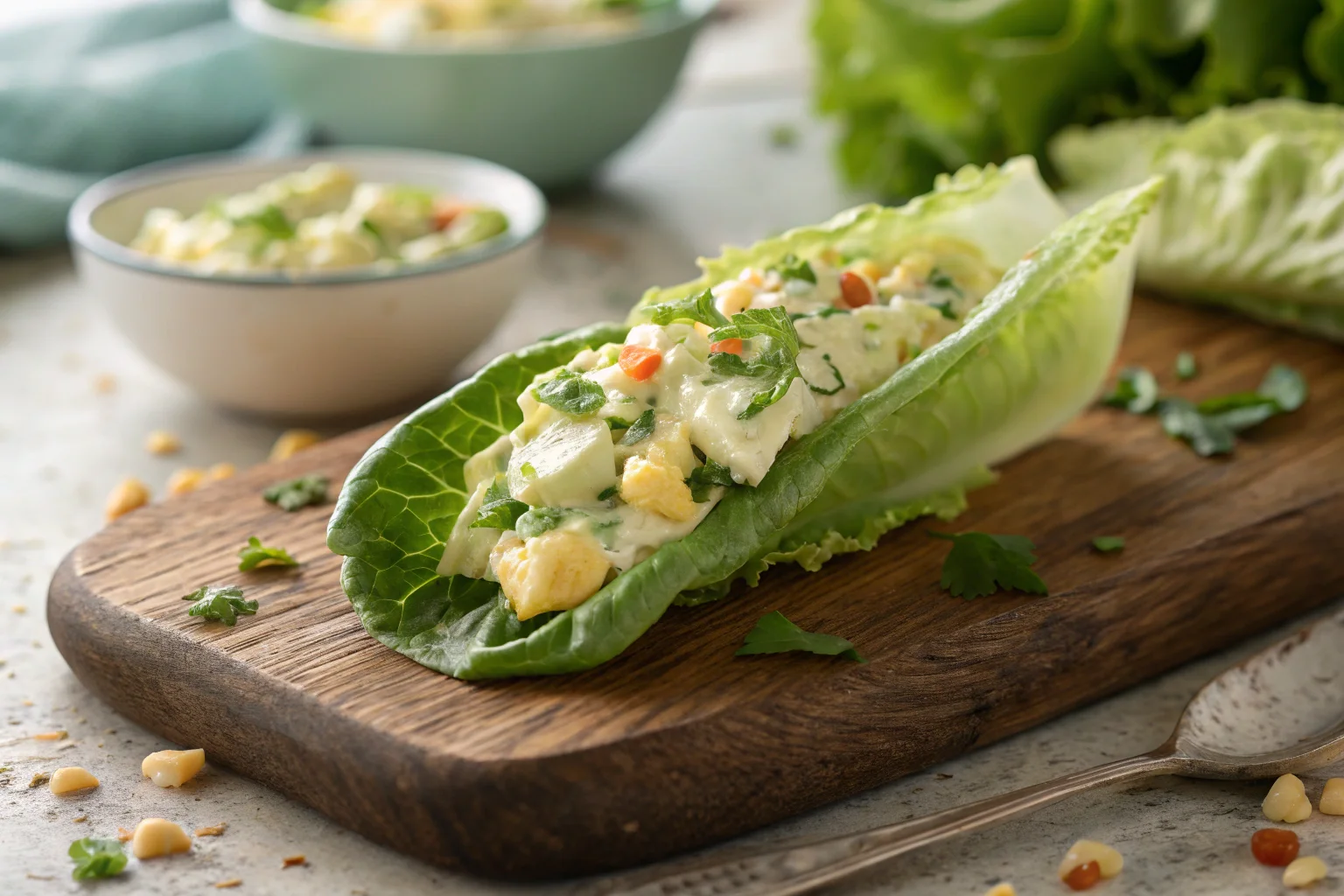Cooking salmon should be simple, right? But here’s the thing—getting the temperature just right can be the difference between a moist, melt-in-your-mouth bite and a dry, disappointing dinner. Whether you’re baking, grilling, or pan-searing, knowing the correct salmon cooking temperature is the key to mastering this flavorful fish.
In this guide, we’ll break down everything from the ideal internal temperature for salmon to the best tools for checking doneness. We’ll also look at how temperature changes depending on the cut of salmon, the method you’re using, and even whether it’s fresh or frozen. Plus, we’ll dive into expert tips, common mistakes to avoid, and answers to the most asked questions out there.
Let’s fire up the grill—or oven—and get into it!
Table of Contents
ToggleUnderstanding the Ideal Salmon Cooking Temperature
What Is the Recommended Salmon Cooking Temperature?
The official USDA guideline recommends cooking salmon to an internal temperature of 145°F (62.8°C). At this temp, the flesh turns opaque and flakes easily with a fork. But here’s the kicker—many chefs and home cooks prefer it cooked a bit lower for that buttery, silky texture that salmon lovers crave. Aiming for 120°F to 130°F for medium-rare to medium doneness often yields the best balance between flavor, texture, and moisture.
So, while 145°F is safe, cooking salmon to around 125°F offers a much more enjoyable bite—especially when you’re using fresh or high-quality salmon.
Internal Temperature Guidelines from USDA and Chefs
Let’s compare the general consensus:
| Doneness Level | Internal Temp (°F) | Texture & Appearance |
|---|---|---|
| Rare | 110°F–115°F | Translucent center, very soft |
| Medium-Rare | 120°F–125°F | Warm center, tender, juicy |
| Medium | 130°F | Flaky, moist, slightly firm |
| Well-Done | 145°F | Fully cooked, drier texture |
Many culinary pros agree: 125°F is the sweet spot. Of course, personal preference plays a big role, and some people just feel better knowing their fish is cooked to USDA standards.
Why Temperature Matters for Cooking Salmon
When it comes to salmon, temperature isn’t just a number—it’s a game-changer. Here’s why:
The Science of Texture, Moisture, and Flavor in Salmon
Salmon is packed with delicate proteins and healthy fats. When overheated, those proteins shrink, squeeze out moisture, and leave you with a dry result. On the flip side, under-cooked salmon might feel mushy or raw. That’s why hitting the right salmon cooking temperature ensures:
- Moist, flakey texture
- Balanced flavor (not too fishy)
- Safe eating, especially if it’s wild-caught or farm-raised
Whether you’re roasting a salmon fillet at 400°F or grilling steaks over high heat, getting the internal temperature just right unlocks that restaurant-quality experience at home.
Don’t miss our bold and flavorful twist with the Churu Chicken Amarillo recipe — a must-try for spicy chicken lovers.
Methods of Measuring Salmon Cooking Temperature
Tools You Need to Check Salmon Temperature Accurately
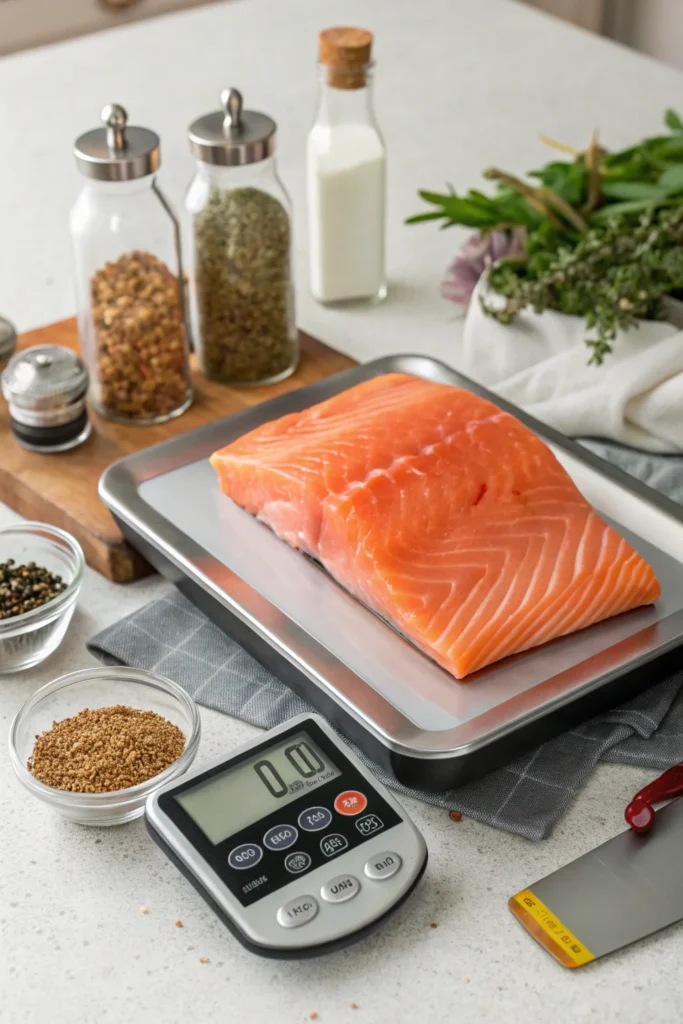
Cooking salmon without checking its internal temperature is like flying blind. Sure, you might land safely, but wouldn’t you rather be sure? That’s where the right tools come in.
The best way to measure salmon cooking temperature is with a reliable meat thermometer. You’ve got two main types:
- Digital Instant-Read Thermometers: These are fast, accurate, and easy to use. They’re the top pick for home cooks who want quick temperature checks without any guesswork.
- Analog (Dial) Thermometers: Though slower and less precise, they still get the job done if you’re in a pinch.
Many digital thermometers even come with preset alerts for fish, making it hard to overcook your salmon by accident. Plus, they’re super affordable and can be used on meats, poultry, and baked goods too—talk about value!
How to Measure Internal Temperature Correctly
So, you’ve got your thermometer. Now what? It’s not just about stabbing the salmon anywhere—placement matters.
Probe Placement Tips for Accurate Readings
To get the most accurate reading of your salmon’s doneness:
- Insert the probe into the thickest part of the fillet or steak.
- Avoid touching bones or the pan—this can give you a false high reading.
- For fillets, stick the probe sideways, parallel to the cutting board, so it reaches the center evenly.
Remember, salmon continues to cook slightly after being removed from heat due to carryover cooking. So, if your ideal temp is 125°F, consider pulling it out at around 122°F to 123°F and let it rest for a few minutes.
Salmon Cooking Temperature by Cooking Method
When it comes to cooking methods, not all heat is created equal. Whether you’re grilling, baking, or pan-searing, salmon cooking temperature can vary depending on technique. Let’s dive into each one so you can get it right every time.
Baking Salmon: Best Internal Temperature Range
Baking salmon is popular because it’s simple and consistent. The goal? Even heat, moisture retention, and no stress.
Most pros agree that baking salmon at 375°F to 400°F gets the job done beautifully. For that perfect flaky bite:
- Check for an internal temperature of 125°F for medium.
- Go up to 145°F if you prefer a fully cooked, firmer fillet.
Tips for Perfect Baked Salmon Texture
- Bake fillets skin-side down for better crisping and even cooking.
- Cover with foil for moist, gently cooked fish—or go uncovered for a golden top.
- Add lemon slices or herbs for extra flavor during baking.
Grilling Salmon: When to Flip and When to Pull Off
Grilling gives salmon a smoky finish and irresistible char marks. But it’s easy to overdo it if you’re not careful. Grill over medium-high heat, and aim for an internal temperature of 120°F to 130°F.
Timing matters too: thick steaks need about 6–8 minutes per side, while thinner fillets cook faster.
How Heat Differs on an Open Flame
- Direct heat can cause uneven cooking—move the salmon to indirect heat after searing.
- Close the lid to trap heat like an oven.
- Always oil the grates and the fish to prevent sticking.
Grilling is especially great for fattier salmon like Atlantic or King salmon, which stay moist even under high heat.
Pan-Searing Salmon: Getting the Right Doneness
For crispy skin and juicy flesh, pan-searing is where it’s at. Start by heating oil in a cast iron or stainless steel skillet until it shimmers.
- Place the salmon skin-side down and press lightly to avoid curling.
- Cook on medium-high heat for 4–6 minutes, then flip and cook for 2–4 more.
Internal temperature? Again, aim for 125°F, but feel free to stop at 120°F if you like it on the rarer side.
Achieving a Crisp Exterior and Tender Center
- Don’t overcrowd the pan—heat drops fast.
- Finish with butter, garlic, and herbs for added flavor and moisture.
- Let rest for 3–4 minutes before serving to seal in juices.
Poaching or Steaming Salmon Temperature Guide
If you’re after ultra-tender, moist salmon, poaching and steaming are top picks. They gently cook the fish without drying it out, and they work well for leaner types like Sockeye.
- For poaching, water or broth should be just below boiling—about 160°F to 180°F.
- Cook until the salmon reaches an internal temp of 120°F to 125°F.
Moisture Retention Techniques for Gentle Cooking
- Use aromatics like dill, garlic, and lemon in your poaching liquid.
- Cover the pan to trap steam and heat.
- Skip flipping—the gentle environment cooks evenly without handling.
Doneness Levels and What They Look Like
Understanding Doneness Levels for Salmon
Cooking salmon is part science, part art. Each level of doneness offers a different texture and taste. From silky smooth to firm and flaky, it all comes down to the internal salmon cooking temperature.
Here’s a quick breakdown of the common doneness levels:
| Doneness | Internal Temp | Texture | Visual Cue |
|---|---|---|---|
| Rare | 110°F–115°F | Very soft, translucent | Deep orange-pink center |
| Medium-Rare | 120°F | Buttery and moist | Slightly opaque center |
| Medium | 125°F | Flaky, tender | Opaque with slight gloss |
| Well-Done | 145°F | Firm and drier | Fully opaque, light pink |
Knowing these temps helps you avoid undercooked or overcooked salmon. No one wants a mushy center or chalky texture, right?
What Perfectly Cooked Salmon Should Look and Feel Like
Visual and Texture Clues for Doneness
You don’t always need a thermometer—though it helps. There are a few ways to check for doneness:
- Color: Perfect salmon has a uniform pink color without grey or dark spots.
- Flake test: Press a fork into the thickest part. If it separates easily into moist flakes, you’re good.
- Texture: It should be firm but give slightly when pressed. Overcooked salmon feels stiff and dry.
Still, when in doubt, checking the internal salmon cooking temperature is your safest bet.
USDA Guidelines vs. Chef Recommendations
What the USDA Recommends for Salmon Cooking Temperature
The USDA is all about safety. According to their guidelines, salmon should be cooked to an internal temperature of 145°F (63°C). At this temp, it’s fully opaque and firm throughout.
This ensures that any harmful bacteria are killed. It’s the go-to recommendation for families with children, elderly people, or those with compromised immune systems.
However, there’s a catch—it’s often too cooked for many food lovers. Let’s be honest, salmon at 145°F can feel dry and lose some of that rich flavor we all crave.
Why Professional Chefs Cook Salmon Differently
Chef-Preferred Temperatures for Moist, Flavorful Results
Chefs prefer to cook salmon to lower temps, usually between 120°F and 125°F. Why? Because:
- It keeps the interior moist and tender.
- It enhances the natural flavor of the fish.
- It reduces the chance of the salmon becoming rubbery or dry.
And guess what? If you buy sushi-grade or fresh wild salmon, this range is perfectly safe when paired with proper cooking methods.
Balancing Safety and Taste at Home
For most home cooks, striking a balance is key. Here’s what you can do:
- Go for 125°F if you’re serving immediately.
- Let it rest a few minutes after removing it from heat—carryover cooking will bump the temp by 2–3 degrees.
- If you’re worried about safety, briefly broil at the end for peace of mind without sacrificing texture.
Understanding both sides—food safety and culinary finesse—lets you make the right choice depending on who you’re cooking for.
Looking for inspiration? Try this best chicken strips recipe that’s crunchy, juicy, and easy to make at home.
Cooking Temperature by Salmon Type

Why Different Salmon Varieties Need Unique Temps
Not all salmon is created equal. Between wild and farmed varieties, there’s a big difference in fat content, texture, and ideal salmon cooking temperature. That’s why knowing your type of salmon can help you get the best flavor and consistency.
Fatty salmon (like Atlantic or King) holds moisture better and can take slightly higher temperatures. Leaner types (like Sockeye or Coho), on the other hand, dry out faster—so they need gentler cooking.
Let’s break it down.
Wild vs. Farmed Salmon Cooking Temperature
Cooking Wild-Caught Salmon Properly
Wild salmon is typically leaner and cooks faster. The ideal temperature for wild salmon is:
- Medium-Rare: 120°F (49°C)
- Medium: 125°F (52°C)
Because of its low fat content, going above these temps can lead to dry, overcooked fish. So, keep a close eye or use a digital meat thermometer for accuracy.
Best Temps for Farm-Raised Salmon
Farmed salmon, like Atlantic salmon, is higher in fat and more forgiving. You can go a bit higher without ruining texture:
- Medium: 125°F to 130°F
- Well-Done: 140°F to 145°F
That said, many chefs still aim for 125°F to maintain moisture and richness.
Regional Varieties and Adjustments
Don’t forget—Chinook, Pink, Sockeye, and Coho all respond differently to heat. For example:
| Salmon Type | Best Internal Temp | Notes |
|---|---|---|
| King (Chinook) | 125°F | Very fatty, rich |
| Sockeye | 120°F | Lean, deep color |
| Coho | 122°F | Mild flavor |
| Pink | 120°F | Best for quick-cook recipes |
Tailoring your salmon cooking temperature to the species boosts both taste and texture.
Safe Storage and Reheating Guidelines
How to Store Cooked Salmon Safely
Cooked salmon can still be delicious the next day—but only if it’s stored correctly. Right after cooking, allow it to cool to room temperature (no more than two hours out), then seal it in an airtight container and refrigerate.
- Fridge storage: Up to 3 days
- Freezer storage: Up to 2–3 months (use vacuum seal or freezer-safe bag)
This protects flavor and keeps bacteria from creeping in.
Reheating Without Ruining Texture
Methods That Preserve Moisture
The biggest danger when reheating salmon? Overcooking it again. Since salmon cooking temperature plays a role even when reheating, try to avoid drying it out.
Use these methods instead:
- Oven: Wrap in foil and reheat at 275°F for 10–15 minutes
- Stovetop: Heat gently in a covered skillet with a splash of broth or oil
- Microwave: Use low power (30–50%) in short bursts with a damp paper towel on top
Each method helps maintain moisture while gently warming the fish. Bonus tip: Let it sit out for 10 minutes before reheating for more even results.
Temperature Safety for Leftovers
Even leftovers should hit a safe internal temperature when reheated—at least 145°F. But don’t go too far past that or you’ll end up with dry, rubbery bites.
Whenever possible, reheat only what you need. Repeated reheating leads to rapid moisture loss and flavor breakdown.
Tools for Measuring and Monitoring Temperature
Why Accurate Temperature Tools Matter for Salmon
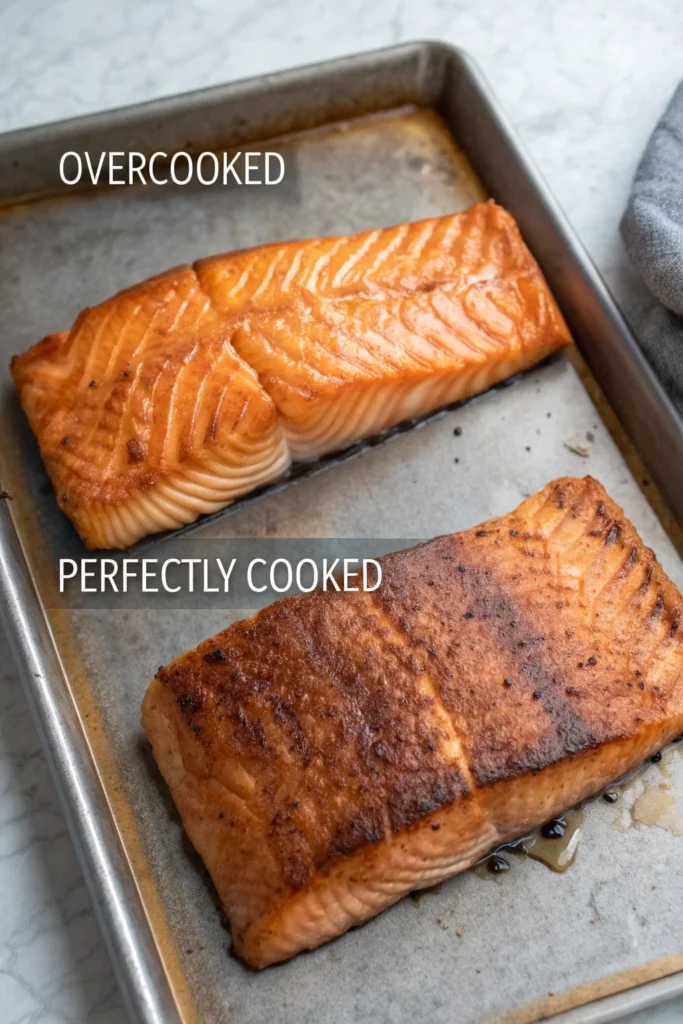
Cooking salmon just right is all about precision. That’s why reliable tools for monitoring the salmon cooking temperature can make the difference between juicy and dry. Salmon can go from perfect to overdone in less than a minute, so having the right gadgets is a real game-changer.
Whether you’re a beginner or seasoned home cook, using temperature tools ensures food safety and maximizes flavor.
Types of Thermometers for Salmon
Instant-Read Thermometers
These are your best bet for checking internal temperature quickly and accurately. Simply insert the probe into the thickest part of the salmon and wait a few seconds.
- Fast results (3–5 seconds)
- Compact and affordable
- Ideal for oven, grill, or pan-cooked salmon
A good example? The ThermoPro or Thermapen. They’re small but mighty.
Digital Probe Thermometers
These tools monitor temperature while the salmon cooks. Set your target temp and the alarm will notify you.
- Great for baking or smoking salmon
- Hands-free and consistent
- Best for recipes needing precise heat
They’re especially helpful if you’re slow-roasting or using sous vide.
How to Use a Thermometer for Perfect Salmon
To get an accurate reading:
- Insert the probe into the thickest part of the fillet, avoiding bones.
- Check the temperature near the end of cooking, not too early.
- Remove salmon from heat 3–5°F below target—it’ll continue cooking off heat (carryover cooking).
So if you want 125°F, take it out at around 122°F.
Bonus Tools That Help You Monitor Cooking
Other helpful gear includes:
- Oven thermometers (to make sure your oven runs true)
- Fish spatulas (so you don’t break the fillet while checking temp)
- Heat-safe gloves (especially when grilling)
All these tools help manage the salmon cooking temperature smoothly, especially during delicate recipes.
Common Mistakes to Avoid with Salmon Cooking Temperature
Overcooking Is the #1 Salmon Killer
Let’s face it—overcooked salmon is dry, tough, and just plain sad. A lot of folks crank up the heat too much or leave it in too long, especially if they don’t use a thermometer.
The fix? Always aim for an internal temp between 120°F and 125°F unless you’re after well-done. And don’t forget that salmon keeps cooking once it’s off the heat.
Not Accounting for Carryover Cooking
What Is Carryover Cooking?
Carryover cooking is when heat continues to rise inside the salmon after it’s removed from the oven, grill, or pan. That extra 3–5°F can be the difference between moist and mushy.
So always stop cooking a little earlier than your target temp.
Skipping the Resting Period
Yes, even fish needs a rest. Letting your salmon sit for 3–5 minutes before serving allows juices to redistribute—making every bite more flavorful.
Skip this step, and you’ll lose moisture on the plate instead of in your mouth.
Not Knowing Your Salmon Type
Remember what we said earlier? Wild and farmed salmon cook differently. Using the same salmon cooking temperature across all types can result in less-than-ideal texture. Always match the cooking temp to the variety you’re working with.
Cooking Straight from the Fridge
Starting with cold salmon leads to uneven cooking. The outside might be overdone while the inside is still raw.
To avoid this mistake:
- Let your salmon sit at room temp for 15–20 minutes before cooking.
- Pat it dry to help browning and even heat penetration.
These simple steps improve temperature control big time.
Frequently Asked Questions (FAQs)
What is the safe internal temperature for cooked salmon?
The USDA recommends an internal temperature of 145°F (63°C) for cooked salmon. However, many chefs prefer 120°F to 125°F for a more tender, moist finish.
How can I tell if salmon is done without a thermometer?
Look for visual cues: the flesh should be opaque, easily flake with a fork, and show slight separation between muscle fibers. Still, a thermometer is more reliable.
Is it OK to eat salmon a little undercooked?
If you’re using sushi-grade or properly handled salmon, slight undercooking (around 115°F to 120°F) can be safe, especially in dishes like salmon tartare or seared salmon. Always consider the source.
Does carryover cooking apply to salmon?
Yes! Salmon continues cooking after being removed from heat, typically rising 3–5°F. Plan accordingly and pull it early.
Can I cook frozen salmon directly?
Yes, but you’ll need to increase cooking time by about 50%. Always ensure the internal temperature reaches at least 145°F for safety.
What temperature should I use for oven-baked salmon?
Bake salmon at 375°F to 400°F for best texture and caramelization. Lower temps (like 275°F) work well for slow-roasting.
Conclusion: Mastering Salmon Cooking Temperature
Cooking salmon perfectly isn’t just a matter of timing—it’s a balance of heat, texture, and technique. Whether you prefer pan-searing, baking, grilling, or poaching, keeping your eye on the right salmon cooking temperature transforms your fish from average to unforgettable.
From USDA guidelines to pro-chef recommendations, you now have the tools, tips, and tricks to handle salmon like a seasoned kitchen hero. Want moist, flaky, melt-in-your-mouth salmon every time? Stick to the optimal temps, avoid common mistakes, and invest in a reliable thermometer.
